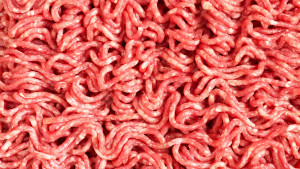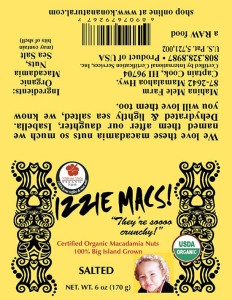The U.S. Food and Drug Administration announced today that it is requesting comments from the public, including scientific data and information, that would assist the agency in identifying and evaluating measures that might minimize the impact of harmful bacteria in cheeses made from unpasteurized milk.
 The FDA recognizes that there is broad diversity in cheese manufacturing operations and approaches and that many factors go into ensuring the safety of the food. In issuing this call for data and information, we are interested in learning more about the standards and practices in use by a wide variety of producers, including the growing artisanal cheese manufacturing community.
The FDA recognizes that there is broad diversity in cheese manufacturing operations and approaches and that many factors go into ensuring the safety of the food. In issuing this call for data and information, we are interested in learning more about the standards and practices in use by a wide variety of producers, including the growing artisanal cheese manufacturing community.
We are taking this action as part of an ongoing discussion with industry and other stakeholders about potential health risks associated with consumption of cheese made from unpasteurized milk — risks that are greatest for people with weakened immune systems, older adults, pregnant women and children. The FDA is taking this action in part based on findings from a joint FDA/Health Canada Quantitative Risk Assessment also being released today.
The Federal Register notice was published Aug 3/15. Excerpts below:
A 2012 review of outbreaks of foodborne illness that occurred in the United States between 1993 and 2006 that were attributed to dairy products determined that more than 50 percent of the outbreaks reviewed in the study involved cheese, with the remaining outbreaks being attributable to fluid milk (Ref. 1). Forty-two percent of the 65 cheese-associated outbreaks (i.e., 27 outbreaks) were attributable to products manufactured from unpasteurized milk, even though the contribution of unpasteurized dairy products to all dairy product consumption in the United States during the time period under study was estimated at below 1 percent (on a weight or volume base) (Ref. 1). The 65 analyzed outbreaks due to cheese made from unpasteurized milk resulted in 641 associated illnesses with 131 hospitalizations (i.e., a hospitalization rate of more than 20 percent). Pathogens associated with these outbreaks included Listeria monocytogenes, Escherichia coli (E. coli) O157, Salmonella, and others (Ref. 1). All of these pathogens can cause significant illness and even death.
 FDA and Health Canada recently collaborated on the development of a model to evaluate the impact of factors, such as the microbiological status of milk used in cheese production, various cheese manufacturing steps, conditions during distribution and storage, and cross-contamination during processing and handling, on the public health risk of listeriosis from consumption of soft-ripened cheese. Elsewhere in this issue of the Federal Register, we are announcing the release of the “Joint Food and Drug Administration/Health Canada—Santé Canada Quantitative Assessment of the Risk of Listeriosis From Soft-Ripened Cheese Consumption in the United States and Canada” (the FDA/Health Canada QRA) (Ref. 2).
FDA and Health Canada recently collaborated on the development of a model to evaluate the impact of factors, such as the microbiological status of milk used in cheese production, various cheese manufacturing steps, conditions during distribution and storage, and cross-contamination during processing and handling, on the public health risk of listeriosis from consumption of soft-ripened cheese. Elsewhere in this issue of the Federal Register, we are announcing the release of the “Joint Food and Drug Administration/Health Canada—Santé Canada Quantitative Assessment of the Risk of Listeriosis From Soft-Ripened Cheese Consumption in the United States and Canada” (the FDA/Health Canada QRA) (Ref. 2).
FDA establishes food standards of identity, to promote honesty and fair dealing in the interest of consumers, under the authority set forth in section 401 of the Federal Food, Drug, and Cosmetic Act (the FD&C Act) (21 U.S.C. 341). Some of these standards of identity (e.g., the standard of identity for soft-ripened cheese in § 133.182 (21 CFR 133.182)) permit the manufacture of cheese from unpasteurized milk. These standards of identity specify that the process for cheese manufactured from unpasteurized milk include an aging period. A typical aging period is not less than 60 days at not less than 35 °F (see § 133.182(a) in the standard of identity for soft-ripened cheese).
The aging period for cheese manufactured from unpasteurized milk was presumed to act as a control measure to reduce the risk that pathogens would be present when the cheese was consumed. However, the available data and information raise questions about the safety of cheese manufactured from unpasteurized milk, even when aged. For example, research has demonstrated that pathogens such as E. coli O157:H7 can survive a 60-day aging period in a hard cheese such as Cheddar cheese (Refs. 3 and 4). In addition, a 1997 memorandum from a subcommittee of the National Advisory Committee on Microbiological Criteria for Foods stated that the scientific literature confirms that pathogens can survive the 60-day aging process for cheeses manufactured using unpasteurized milk (Ref. 5). More recently, the results of the FDA/Health Canada QRA suggest that the 60-day aging period for soft-ripened cheese may increase the risk of listeriosis from consumption of soft-ripened cheese by allowing more time for L. monocytogenes, if present, to multiply (rather than decrease) as the soft-ripened cheese ages (Ref. 6).
 We are continuing to evaluate the safety of processes for the manufacture of cheese, particularly processes for the manufacture of cheese from unpasteurized milk. We are requesting comments and scientific data and other information to:
We are continuing to evaluate the safety of processes for the manufacture of cheese, particularly processes for the manufacture of cheese from unpasteurized milk. We are requesting comments and scientific data and other information to:
Understand what (if any) aspects of the current regulatory framework for the production of cheese manufactured from unpasteurized milk act as an impediment to efficient and effective control measures to significantly minimize pathogens that may be present in unpasteurized milk.
Understand current practices to reduce the potential for foodborne illness during the manufacture of cheese from unpasteurized milk. To what extent do producers of cheese manufactured from unpasteurized milk solely rely on an aging period to significantly minimize pathogens that may be present in unpasteurized cheese? If such producers rely on control measures other than the aging process, what are those control measures and what is the prevalence of those control measures among such producers? How effective and practical are these control measures?
Understand the availability and feasibility of various treatments (e.g., to achieve bacterial reductions of from 100- to 1,000,000-fold) that could reduce the risk of listeriosis and other foodborne illness from the consumption of all types of cheeses manufactured from unpasteurized milk. We are aware of non-thermal control measures such as added substances (such as bacteriocins, lactoferrins, lysozyme, other enzymes, and salt), bactofugation, carbon dioxide, high hydrostatic pressure, microfiltration, microwave, pulsed electric field, pulsed light, ultrasound, and ultraviolet light. However, we would like to receive additional data regarding the efficacy, on a consistent basis, of such treatments when used to minimize the broad spectrum of pathogens that may be present in unpasteurized milk.
Evaluate the impact of the currently required 60-day minimum aging period for soft-ripened cheese on pathogens other than L. monocytogenes in soft-ripened cheese. For example, how does the minimum aging period affect the safety of the cheese with respect to pathogens other than L. monocytogenes? Are there alternatives to the currently required 60-day aging period for soft-ripened cheese that would ensure the safety of such cheese with respect to these pathogens?
Evaluate the impact on pathogens of a minimum aging period for all those cheeses that are subject to a required minimum aging period through an applicable standard of identity. As discussed in section I, research and a literature review show that pathogens can survive the 60-day aging process for cheeses manufactured using unpasteurized milk. For pathogens other than L. monocytogenes, is a 60-day aging period effective in adequately reducing a broad spectrum of pathogens that could be in cheese manufactured from unpasteurized milk?
Determine whether, consistent with modern international approaches to food safety (Ref. 7), a performance objective (or standard) for L. monocytogenes should be used as a replacement for the 60-day aging requirement and whether a second performance standard for Gram-negative enteric pathogens should also be used. If a second performance standard is used for Gram-negative enteric pathogens, which Gram-negative pathogen should be specified?
Understand the prevalence of testing during manufacture (e.g., testing for pathogens of each lot of cheese manufactured from unpasteurized milk and of bulk shipments of unpasteurized milk). If testing is not currently being used, how practical would such testing be? How much would it cost?
Determine the extent to which consumers understand the risk of foodborne listeriosis or other illness from consumption of cheese manufactured from unpasteurized milk. To what extent are consumers aware that an aging process has had (and may continue to have) a role in food safety as well as a role in the particular type of cheese produced? To what extent do consumers consider whether a cheese is made from pasteurized or unpasteurized milk in making purchase decisions?
References
Back to Top
The following references are available electronically at http://www.regulations.gov. (FDA has verified the Web site addresses, but we are not responsible for any subsequent changes to the Web sites after this document publishes in the Federal Register.)
- Langer, A. J., T. Ayers, J. Grass, et al., “Nonpasteurized Dairy Products, Disease Outbreaks, and State Laws—United States, 1993-2006,”Emerging Infectious Disease 18(3): 385-391, 2012.
- FDA and Health Canada, “Joint Food and Drug Administration/Health Canada—Santé Canada Quantitative Assessment of the Risk of Listeriosis from Soft-Ripened Cheese Consumption in the United States and Canada.” Accessible at http://www.fda.gov/Food/FoodScienceResearch/RiskSafetyAssessment/default.htm and http://www.fda.gov/ScienceResearch/SpecialTopics/PeerReviewofScientificInformationandAssessments/ucm079120.htm (2015).
- Reitsma, C.J. and D.R. Henning, “Survival of Enterohemorrhagic Escherichia coli O157:H7 During the Manufacture and Curing of Cheddar Cheese,”Journal of Food Protection, 59(5): 460-464, 1996.
- Schlesser, J.E., R, Gerdes, S. Ravishankar, et al, “Survival of a Five-Strain Cocktail of Escherichia coli O157:H7 During the 60-Day Aging Period of Cheddar Cheese Made from Unpasteurized Milk,”Journal of Food Protection, 69(5):990-998, 2006.
- Memorandum from Chair, Cheese Subcommittee of the National Advisory Committee on Microbiological Criteria for Foods to Chair, National Advisory Committee on Microbiological Criteria for Foods, “Review of Scientific Literature Regarding the Sixty-Day Aging Process for Hard Cheese,” April 3, 1997.
- FDA and Health Canada, “Joint Food and Drug Administration/Health Canada—Santé Canada Quantitative Assessment of the Risk of Listeriosis from Soft-Ripened Cheese Consumption in the United States and Canada: Interpretative Summary.” Accessible at http://www.fda.gov/Food/FoodScienceResearch/RiskSafetyAssessment/default.htm and http://www.fda.gov/ScienceResearch/SpecialTopics/PeerReviewofScientificInformationandAssessments/ucm079120.htm (2015).
- Codex Alimentarius Commission, “Principles and Guidelines for the Establishment and Application of Microbiological Criteria Related to Foods, CAC/GL 21-1997,” 1997.












